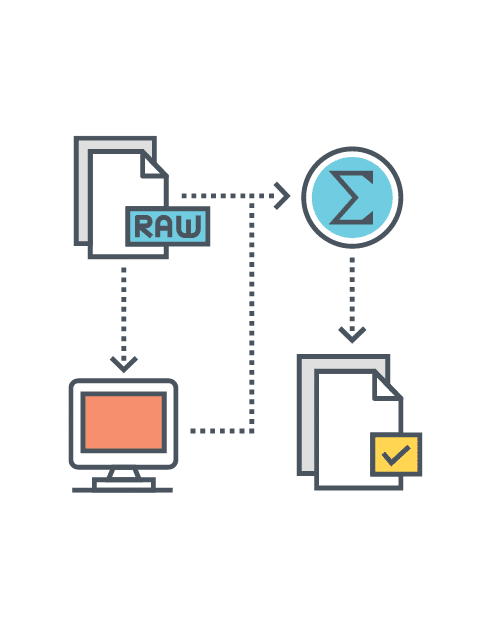Table of Contents
ToggleHello everyone welcome back to our new article where we are going to discuss, what is the role of AI and ML in cyber security and how they help us to prevent many types of cyber attacks before they performed.
As we know that artificial intelligence and machine learning are now very popular and growing technologies in various industries and applications, due to this they are using large computing power, data collection, and various storage capabilities.
The technological advancement in AI is like self-driven cars, language translators, and big data, which comes with the increase in cyber attacks like ransomware attacks, botnet attacks, and Phishing attacks.
AI and ML always help a security researcher or professional for identifying new exploits and weaknesses, which can be useful for analyzing any future attack and mitigating its risk.
Most of the time AI and ML reduce the pressure on security professionals and alerts them whenever an action is needed in reference to any cyber attack.

What are AI and ML
Artificial intelligence (AI) is the only popular solution for defending any network from any type of cyber attack, which cannot be detected by an antivirus system or software.
A large amount of data are processed into the AI for analyzing and understanding the details and trends of the threats.
Machine Learning (ML) is a branch of artificial intelligence (AI) that gives the system, the ability to self-learn without any explicit program.
The self-learning system is used to define what the normal network, along with its devices, looks like, and then uses this to backtrack and report any deviation or anomalies in real-time.
Classification of ML
Further, ML is divided into 2 techniques that are:
- Supervised Learning
- Unsupervised Learning

Supervised Learning
Supervised Learning:- The algorithm is trained on a labeled data set which means the data set used for training the algorithm includes both the input data and correspondent data, which is also known as the labeled data.
Supervised learning is further divided into 2 subcategories that are classification and regression. the classification involves completely divided classes. its main task is to define the test sample to identify its class.
we use regression when the data classes are not separated, such as when the data continues.
Unsupervised learning

It is a type of machine learning where the algorithm is not provided with the labeled data, but here we give it unlabeled training data to discover patterns and relationships within the data on its own.
The purpose of unsupervised learning is to identify the structure and patterns in the unlabeled data, like grouping similar data points into clusters, and handling anomalies, reducing the dimensionality of the data.
Unsupervised learning is also divided into 2 subcategories that are clustering and dimensionality reduction,
The main goal of clustering is to divide the data into clusters on the basis of their similarity, without getting affected by its data class information.
Dimensionality reduction is the process of reducing dimension attributes of data.
How AI and ML help in preventing cyber attacks

Artificial intelligence and machine learning are the vast growing and emerging technologies in the cyber world.
It is because they help security professionals with many automated works like preventing brute force attacks, denial-of-service attacks, and many other types of attacks through automation.
This field is widely adopted by many large-scale industries such as manufacturing, production, finance, IT services, and automation.
Artificial intelligence is playing a very crucial role in detecting and mitigating the risk of cyber threats by incorporating machine learning as a subset:
There are many ways that AI and ML each safeguard industries from many types of cyber attacks.
The cyber attack includes:

- password protection and authentication
- Phishing detection and prevention
- Threat detection
- vulnerability management
- behavioral analytics
- network security
- AI-based antivirus
- fraud detection
- botnet detection
- AI to combat AI threats
Password Protection and Authentication
Password Protection and authentication play a very important role in preventing any unauthorized access to the organization’s and its user’s data.
If the credentials of any user are compromised then it will affect the reputation of the organization or person, which will result in defamation and financial loss for the individual and organization too.
Sometimes many companies use biometric authentication for their users but traditional biometric authentication is sometimes vulnerable to attacks or credential breaches.
So developers use AI programs to improve biometric validation and face recognition to prevent any authentication attack.
Artificial intelligence provides the latest models on biometric authentication for recognizing any user’s biometric data with tracking key correlations and patterns.
Phishing detection and prevention

Most likely phishing is a common attack on any individual for compromising any credential data of the person like username, password, credit card information, or any type of login details.
Most of the time attackers use these techniques to compromise user’s credential data. Sometimes attackers use email attachments for sending phishing malware to the victim’s system.
AI plays an important role in detecting and preventing any type of phishing attack because it is nearly impossible for humans to identify and prevent such phishing attacks.
But AI can do this in a couple of seconds that’s why many large industries use a detection and prevention system for their employee’s security.
AI can quickly differentiate between a malicious website from a legitimate website.
Threat detection
Machine Learning plays a very important role in detecting and preventing any type of cyber attack before systems are exploited.
As a part of AI, machine learning continuously notifies the sysadmin of any type of emerging cyber threat attack by carrying out logical data analysis.
Machine learning allows the system to executives algorithms upon the received data, and then perform deep learning On the data to comprehend the advancement required to ensure the safety of the information system.
Vulnerability management
AI and ML never allow vulnerability to exist in the system for a long time, they always scan for the vulnerabilities and alert the sysadmin before any vulnerability gets exploited in the system.
They can also analyze and provides the pattern used by the attacker to perform the attack on the system.
They are that much capable that they are able to predict how and when any vulnerability exploitation might occur or not and their risk level.
Behavioral analytics
Another notable security improvement by artificial intelligence is behavioral analytics.
The attacker who compromised the security of the individual user by stealing its credentials can also perform many malicious activities on the organization’s network and these attempts are more difficult to detect because it was occurring by a legitimate user account.
Now the AI and ML generate the pattern of regular uses of the user, and if they detect any type of suspicious activity they immediately alert the sysadmin on the deviation in regular uses of the user.
If you have any queries regarding the above content, or you want to update anything in the content, then contact us with your queries. You can directly post your question in the group.
Connect with us on these platforms



